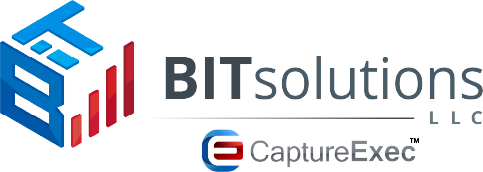Most government sales business today requires a structured process to be followed. Unlike the commercial side, the government has a significant amount of public reporting and transparency, as well as multiple rules forbidding favoritism. Not paying attention to these rules results in many vendors losing bids without even being considered, a common rookie mistake.
The first step any private company should consider involves how your product or service is going to enter the government procurement realm. Will your business provide commodities or deliver services or both? This makes a big difference, sending your business down a specific procurement channel and rule set.
Simple retail level selling represents the easiest level. Government offices often procure through credit cards or simple purchase orders and buy over the counter. However, this type of procurement is often limited to a few thousand dollars at best. After the aggregate purchasing in a fiscal year exceeds a certain level, bidding rules kick in to ensure competition between vendors and best value achievement by the agency.
Informal bidding is the next level and is done mostly through GSA Schedules. This is frequently performed in at least three simple quotes being obtained for a service or goods. The procurement officer generally fills out a simple form to document the quote. If goods, a purchase order is then written up for the lowest bidder. If services, a service order is written up instead as a simple contract.
Formal bidding represents the third general level. This is where things get complicated quickly. Two generic forms of bidding occur:
- An Request for Information (RFI) or
- A Request for Proposal (RFP).
An RFI is the Government’s way of asking Industry what types of solutions might be available and how they might be implemented to support the requirements. This allows the Government to “see” different solutions and help them determine the best path forward to solve their requirements. Most importantly for you, this is your opportunity to shape the deal towards the solution that your company is best suited to supply. If you can convince the Government that your solution is the best and you have a better “mousetrap”, then you are more likely to win the bid when it comes out. On the other hand, the RFP bid is the Government’s way of spelling out one of two things: (1) they can lay out a very specific set of requirements and look for vendors who can support their needs and give them the best price, or (2) they can be more general and leave it up to vendors to spell out the details. The first option is generally awarded based on price and the second option is generally awarded based on best value.
The problem, however, is that the above structure doesn’t fully explain how to improve one’s bid performance. That also comes with understanding the other elements in play.
First, make certain you understand if the organization is fully funded for the project they are working on. Annual government budgeting documents spell out how those agencies are funded. This is key in knowing whether a given program has the funding to commit to a bid they put out. It’s a common play when an agency might put out a request for information (RFI) just to see what a service or product might cost, without ever committing to the procurement itself. Or they might spread a procurement over multiple years, which may not match your company’s interest in cash flow timing.
Second, build relationships with Contract officers and their Specialist. These folks can help you understand the program construct so you know if it is a set-aside program or full and open. You should also work with the Small Business Advocate organization very closely to help shape a deal to favor the type of company you have. Make sure you introduce yourself and your product as often as you can, sit in on public meetings, and become a regular face. The more agency contacts who are familiar with your company, the more you are remembered.
Third, and most important, become friends with the Command or Agency from the top to the bottom. Meet the CO or SES leadership team and understand what they are trying to accomplish across their entire organization. This is vital to get visibility and understand pain points from the top leadership’s perspective. It is not the agency’s job to find a use for your product or service, it’s your job to understand and solve their need with what you do or sell. Make the connection for them by showing your value to the agency’s mission. Next, make sure you meet and befriend all the Program Managers who will be selecting and managing the work that you hope to win. Again, it is vital to understand the pain points from “their” perspective – generally, very different than their boss’ pain. You have to understand and account for both levels if you are going to write a compelling response.
Finally, don’t bid or respond to every single opportunity. Vendors who exceed their capacity just to win a bid end up burning too many cycles on deals they likely won’t win and don’t spend enough on the deals they should win. Instead, focus on the bids you know your company can handle and have a higher probability of a win. This will build your reputation in government performance as well as ensure a long-term, repeat account in future bid opportunities.
BIT Solutions can help. With our CaptureExec software that helps you see which deals to bid on and our Consulting team that helps you shape deals and supports the entire B&P process. BIT Solutions can help give your bidding an edge in both research and bid preparation, as well as pipeline management. Connect with us to discuss further today!


